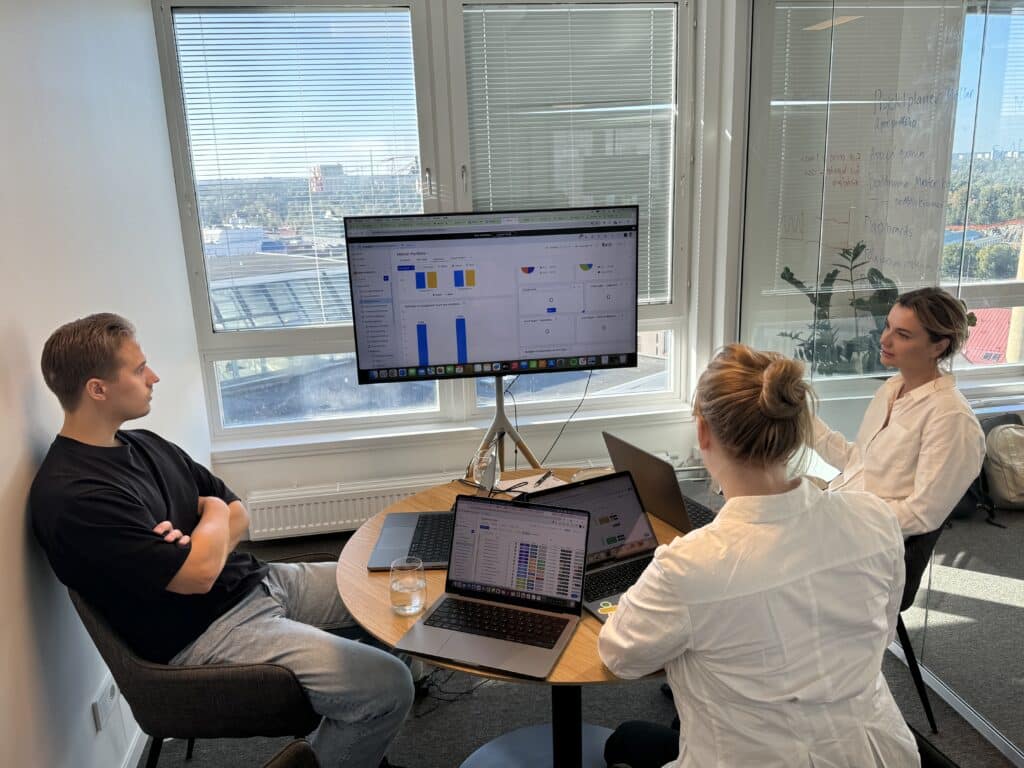Introduction
In today’s dynamic workplace environment, the pulse of an organization’s health can often be measured through its employee engagement and satisfaction metrics. These metrics are more than just numbers on a performance dashboard. They are vital indicators of the overall well-being and productivity of a workforce. As we delve into the nuances of improving employee engagement and satisfaction metrics, it’s essential to understand the profound impact these factors have on organizational success.
Employee engagement and satisfaction are not just buzzwords in the corporate world. They are the cornerstones of building a thriving and resilient workplace. Engaged employees are the lifeblood of any organization. They drive innovation, foster a positive work culture, and ultimately contribute to the bottom line. Satisfaction, on the other hand, reflects how well an organization meets the needs and expectations of its employees. In turn, this affects retention rates, talent attraction, and overall morale.
The journey of improving employee engagement and satisfaction metrics is not a one-size-fits-all approach. It requires a deep understanding of your workforce, a commitment to continuous improvement, and the implementation of targeted strategies that resonate with your organizational values and goals. Throughout this blog post, we will explore various dimensions of employee engagement and satisfaction. We’ll further highlight effective strategies and tools that can transform these metrics from mere data points into catalysts for profound organizational growth.
As we navigate through this topic, remember that improving employee engagement and satisfaction metrics is an ongoing process, demanding constant attention and adaptation. It’s about creating an environment where employees feel valued, heard, and motivated to contribute their best. So, let’s embark on this journey together, uncovering the secrets to nurturing a vibrant and productive workplace.
Understanding Employee Engagement and Satisfaction
To embark on the journey of improving employee engagement and satisfaction metrics, it’s crucial to first grasp what these terms truly mean and why they hold such significance in the modern workplace.
Employee Engagement: The Heartbeat of Productivity
Employee engagement refers to the level of enthusiasm and dedication an employee feels toward their job. It’s about having passionate team members who are committed to the organization’s goals and values, who go above and beyond in their roles, and who are proactive in their contributions. Engaged employees are often the ones who bring creativity and innovation to the table, driving the organization forward.
But why is improving employee engagement and satisfaction metrics so important? Studies have consistently shown that organizations with high levels of employee engagement report better job performance, lower turnover rates, and higher customer satisfaction. This underscores the direct link between engaged employees and the overall success of a business.
Employee Satisfaction: A Reflection of Workplace Harmony
On the flip side, employee satisfaction measures how content employees are with various aspects of their job – including their roles, workplace environment, compensation, and the respect they receive from management. While engagement focuses on the emotional and psychological investment in the job, satisfaction is more about the practical and environmental factors that affect an employee’s work life.
Improving employee satisfaction metrics is not just about keeping the peace; it’s about creating a supportive and nurturing environment where employees can thrive. Satisfied employees are more likely to stay with an organization, reducing turnover costs and retaining valuable talent. They also contribute to a positive workplace culture, which can attract top talent and enhance the company’s reputation.
The Synergy of Engagement and Satisfaction
It’s important to note that engagement and satisfaction are interconnected, each influencing the other. Improving employee engagement and satisfaction metrics means addressing both these aspects in tandem. An engaged employee might not be satisfied if, for instance, the work-life balance is poor, and a satisfied employee might not be engaged if they find their work unchallenging.
In the following sections, we will explore how to effectively measure these metrics and implement strategies to enhance both employee engagement and satisfaction. By doing so, organizations can foster a more motivated, productive, and cohesive workforce, laying the foundation for sustained business success.
Omnitas Newsletter
Sign up for our monthly newsletter to stay up-to-date on our latest blog articles, videos and events!
Thank you!
You have successfully joined our subscriber list.
Strategies for Enhancing Employee Engagement
Enhancing employee engagement is not just a human resource initiative; it’s a strategic approach that involves the entire organization. To effectively improve employee engagement and satisfaction metrics, a multifaceted strategy is necessary. Let’s explore some of the most effective methods:
Fostering a Positive Company Culture
A positive and inclusive company culture is the bedrock of employee engagement. Cultivating an environment where employees feel valued, respected, and part of a larger mission can significantly boost their engagement levels. This includes recognizing employee achievements, promoting open communication, and ensuring that company values are more than just words on a website, but are lived and breathed throughout the organization.
Providing Growth and Development Opportunities
Employees who feel stagnant in their roles are less likely to be engaged. By offering opportunities for professional development and career advancement, organizations can keep their workforce motivated and engaged. This might include training programs, mentorship opportunities, and clear pathways for career progression. Encouraging continuous learning and growth not only improves engagement but also keeps your team’s skills sharp and relevant.
Role of Leadership in Fostering Engagement
Leadership plays a pivotal role in employee engagement. Leaders who are approachable, empathetic, and communicative can significantly enhance the engagement levels of their teams. They should be trained to recognize the signs of disengagement and act accordingly. Furthermore, leaders should be adept at providing constructive feedback, setting clear goals, and inspiring their teams to achieve their best.
Innovative Approaches to Engagement
In the digital age, innovative tools and strategies are essential in keeping the workforce engaged. Utilizing technology platforms like monday.com can streamline workflow, improve communication, and foster collaboration, thereby enhancing engagement. Gamification, flexible working arrangements, and social events are other innovative ways to keep employees engaged and connected.
The Role of Feedback and Continuous Improvement
Engagement is a two-way street. Regularly seeking and acting on feedback from employees is crucial. This could be through surveys, suggestion boxes, or regular one-on-one meetings. The key is to not just collect feedback but to act on it, showing employees that their opinions are valued and can lead to real change.
Boosting Employee Satisfaction through Workplace Innovations
Improving employee satisfaction metrics requires a creative and forward-thinking approach, particularly in today’s fast-paced and ever-changing work environment. Workplace innovations play a crucial role in this endeavour. Let’s explore how modern strategies and tools can elevate employee satisfaction.
Embracing Flexible Work Arrangements
One of the most significant trends in recent years is the shift towards flexible work arrangements. Allowing employees to have control over their work schedules, or offering options for remote work, can lead to a significant increase in job satisfaction. This flexibility can improve work-life balance, reduce commute stress, and show employees that their personal lives are valued alongside their professional contributions.
Enhancing Workplace Environment and Design
The physical workplace environment has a profound impact on employee satisfaction. Innovations in office design, such as ergonomic workstations, open and collaborative spaces, and areas for relaxation, can contribute to a more comfortable and enjoyable work experience. Incorporating green spaces and ensuring a well-lit, aesthetically pleasing environment can also enhance mental well-being and satisfaction.
Leveraging Technology for Enhanced Satisfaction
Technology solutions like monday.com and Make can play a pivotal role in boosting employee satisfaction. These tools can streamline processes, reduce tedious tasks through automation, and facilitate better communication and collaboration. When employees spend less time on mundane tasks and more on meaningful work, satisfaction levels typically rise.
Prioritizing Health and Well-being
Employee satisfaction is deeply linked to their health and well-being. Initiatives like wellness programs, mental health days, and providing resources for physical and mental health can show employees that the organization cares about their well-being. This not only improves satisfaction but can also lead to better overall health and reduced absenteeism.
Recognizing and Rewarding Employees
Recognition and rewards are powerful tools for boosting employee satisfaction. Implementing systems for recognizing employee achievements through formal awards, bonuses, or even simple acknowledgements in team meetings can make employees feel appreciated and valued. Personalized rewards and recognition programs can further enhance their impact.

Monitoring and Adjusting Engagement and Satisfaction Strategies
For the continuous improvement of employee engagement and satisfaction metrics, it’s essential to have effective monitoring systems and the willingness to adjust strategies as needed. This iterative process ensures that the initiatives remain relevant and impactful over time.
Utilizing Advanced Analytics and Metrics
In the quest to improve employee engagement and satisfaction metrics, data is king. Advanced analytics and metrics play a pivotal role in this regard. Utilizing tools that can track engagement and satisfaction levels, such as pulse surveys, performance data, and feedback tools, allows organizations to have a finger on the pulse of their workforce’s sentiment. This data-driven approach enables leaders to make informed decisions and identify areas that require attention or adjustment.
Encouraging Open and Continuous Feedback
Creating channels for open and continuous feedback is vital for keeping engagement and satisfaction strategies effective. Regular check-ins, suggestion forums, and feedback sessions enable employees to voice their concerns and ideas. This ongoing dialogue ensures that strategies remain aligned with employee needs and expectations, fostering a culture of openness and continuous improvement.
Adapting to Changing Workforce Dynamics
The workforce is constantly evolving, and so should the strategies to keep them engaged and satisfied. Adapting to generational shifts, changing job roles, and the global work environment is crucial. This might involve revisiting policies, redefining work roles, or introducing new tools and technologies to meet the changing demands and expectations of the workforce.
Implementing Targeted Interventions
Based on the insights gathered from analytics and feedback, targeted interventions can be more effective than broad, one-size-fits-all initiatives. Tailoring strategies to address specific issues or to cater to different departments, teams, or even individual needs can significantly enhance their effectiveness in improving employee engagement and satisfaction metrics.
Regularly Reviewing and Updating Strategies
The process of enhancing employee engagement and satisfaction is never static. Regular reviews and updates of engagement and satisfaction strategies are necessary to ensure their continued relevance and effectiveness. This includes reassessing goals, analyzing the success of current strategies, and staying abreast of new trends and best practices in employee engagement and satisfaction.
Conclusion
Improving employee engagement and satisfaction metrics is not merely a task to be checked off a list; it’s a continuous journey towards creating a more dynamic, productive, and fulfilling workplace. Throughout this blog post, we have explored various strategies and innovations that can significantly enhance employee engagement and satisfaction. From fostering a positive company culture and leveraging technology to adapting strategies to meet changing workforce dynamics, the path to improved engagement and satisfaction is multifaceted and ongoing.
Remember, the success of these initiatives hinges on their proper implementation and integration into your organization’s unique environment. This is where Omnitas comes into play. If you’re curious about discovering how your business can leverage powerful tools like monday.com and Make to streamline your HR processes for increased employee engagement and satisfaction, we are here to help.
Free Consultation
Don’t hesitate to reach out to us for a free consultation below. Our team at Omnitas is dedicated to helping you tailor these innovative solutions to your specific needs, ensuring that you can maximize their benefits for your organization. Contact us today to learn how we can assist in transforming your employee engagement and satisfaction strategies.
Try monday.com and Make for Yourself
For those who prefer a hands-on approach, we offer free trial links for both monday.com and Make. This is an excellent opportunity for you to experience firsthand how these tools can revolutionize your HR processes. Use our free trial links to explore the features and capabilities of the platforms and see how they can contribute to your efforts in improving employee engagement and satisfaction metrics.
In conclusion, the journey towards enhanced employee engagement and satisfaction is both challenging and rewarding. With the right strategies, tools, and support, you can unlock the full potential of your workforce, leading to a more engaged, satisfied, and productive team. At Omnitas, we are committed to guiding you through every step of this journey, ensuring your success in this vital aspect of organizational growth.
If you found this blog post useful, make sure to sign up for our monthly newsletter. Stay in the loop regarding all things business efficiency!














